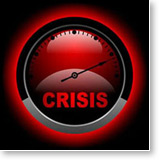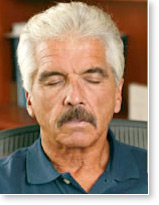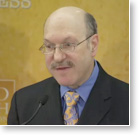 For the average American family of four, the total cost of health care each year is now a whopping $19,393—more than double what it was nine years ago, according to a recent report by Milliman, a global consulting and actuarial firm.
For the average American family of four, the total cost of health care each year is now a whopping $19,393—more than double what it was nine years ago, according to a recent report by Milliman, a global consulting and actuarial firm.
Fortunately, there is an evidenced-based approach that promises to reverse this trend.
According to a new study published in the September/October 2011 issue of the American Journal of Health Promotion, people with consistently high healthcare costs experienced a 28% cumulative decrease in physician fees after an average five-year period practicing the Transcendental Meditation technique compared with their baseline. Non-meditating control subjects experienced an increase in fees to physicians over the same time frame.
 These results are significant because in most populations, a small fraction of people account for the majority of health care costs. In the U.S. general population, the highest spending 10% incurred 60% to 70% of total medical expenditures annually. In the Medicare population, the highest spending 5% incurred 43% of total Medicare costs, and in the senior population, the highest spending 25% accounted for 85% of total expenses. A large number of these people have consistently high medical bills over many years.
These results are significant because in most populations, a small fraction of people account for the majority of health care costs. In the U.S. general population, the highest spending 10% incurred 60% to 70% of total medical expenditures annually. In the Medicare population, the highest spending 5% incurred 43% of total Medicare costs, and in the senior population, the highest spending 25% accounted for 85% of total expenses. A large number of these people have consistently high medical bills over many years.
This new study compared the changes in physician costs over five years for 284 consistent high-cost participants—142 Transcendental Meditation practitioners with 142 non-practitioners in Quebec, Canada. The non-TM subjects were randomly selected from Quebec health insurance enrollees with the same age, sex, and region to match the TM participant profiles. The TM participants decided to begin the technique prior to choosing to enter the study. In the year before the intervention began, there were no significant differences between the groups in payments to physicians.
 During the five-year assessment period, the TM group’s annual rate of change in payments declined significantly (p = 0.004), while the comparison group’s payments showed no significant changes. After the first year, the TM group decreased 11%, and after 5 years, their cumulative reduction was 28% (p = 0.001).
During the five-year assessment period, the TM group’s annual rate of change in payments declined significantly (p = 0.004), while the comparison group’s payments showed no significant changes. After the first year, the TM group decreased 11%, and after 5 years, their cumulative reduction was 28% (p = 0.001).
The primary measure for assessing the effectiveness of TM practice in decreasing medical costs was the fees paid by the Quebec health insurance agency to private physicians in all settings for treating study participants. In Canada and the U.S., physician payments constitute 20% of national health expenditures. This study’s results are important because doctors’ decisions determine most medical expenses: tests, prescription drugs, hospitalization, surgery, and other treatments.

Caption: This chart shows the mean annual total per capita payments to physicians for treating consistent high-cost patients. The TM group’s physician expenses decreased by 28% over five years. The above trend lines show the general behavior of the physician fees for the two groups from the pre-intervention Baseline year through the 5 years of the study. All dollar values were adjusted for inflation and were expressed in constant 1992 Canadian dollars. P-values show the significance of the comparison of Baseline and Last Year for each group.
Source: Changes in Physician Costs Among High Cost Transcendental Meditation Practitioners Compared with High Cost Non-practitioners Over 5 Years, American Journal of Health Promotion, 2011; 26(1): 56–60.
This study’s findings were similar to earlier ones. In a previous Canadian study, the TM group exhibited reduced medical expenses between 5% and 13% relative to comparison subjects each year for 6 consecutive years. In a subsequent Canadian study of senior citizens, the TM group’s five-year cumulative reduction for people aged 65 years and older relative to comparison subjects was 70%.
In a sample of American health insurance enrollees, the TM participants had reduced rates of illness in all disease categories. An eleven-year, cross-sectional study in Iowa found that subjects age 45 and over who practiced the TM technique had 88% fewer hospital days compared with controls. Their medical expenditures were 60% below the norm.
“This article has major policy significance for saving Medicare and Medicaid without cutting benefits or raising taxes,” said Robert Herron, Ph.D., the study’s author. “This study suggests that it may be possible to rescue Medicare and Medicaid by adding coverage for learning the Transcendental Meditation technique.”

Dr. Norman Rosenthal
“If you had any question about whether to practice TM or not, the new study by Herron provides one more incentive to go ahead and do so,” said Norman Rosenthal, M.D., a Clinical Professor of Psychiatry at Georgetown University Medical School and the author of the New York Times bestseller, Transcendence: Healing and Transformation through Transcendental Meditation. “The new data show that both you and your wallet will be the better for it.”
References:
Related research on the TM program’s affect on healthcare utilization:



